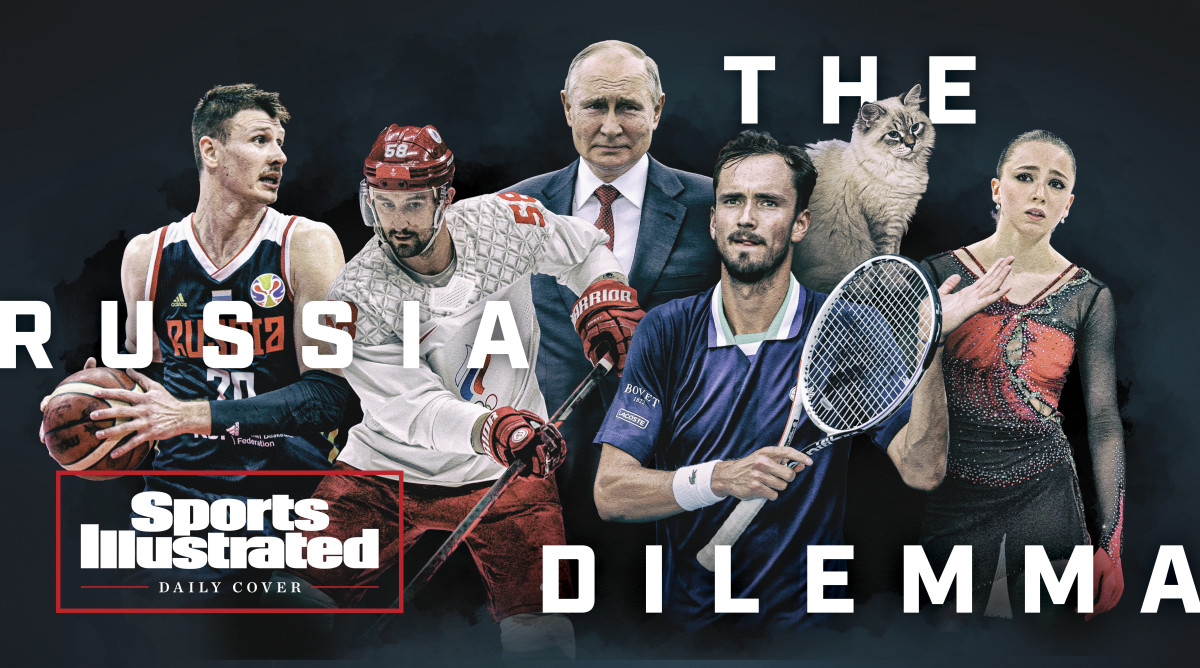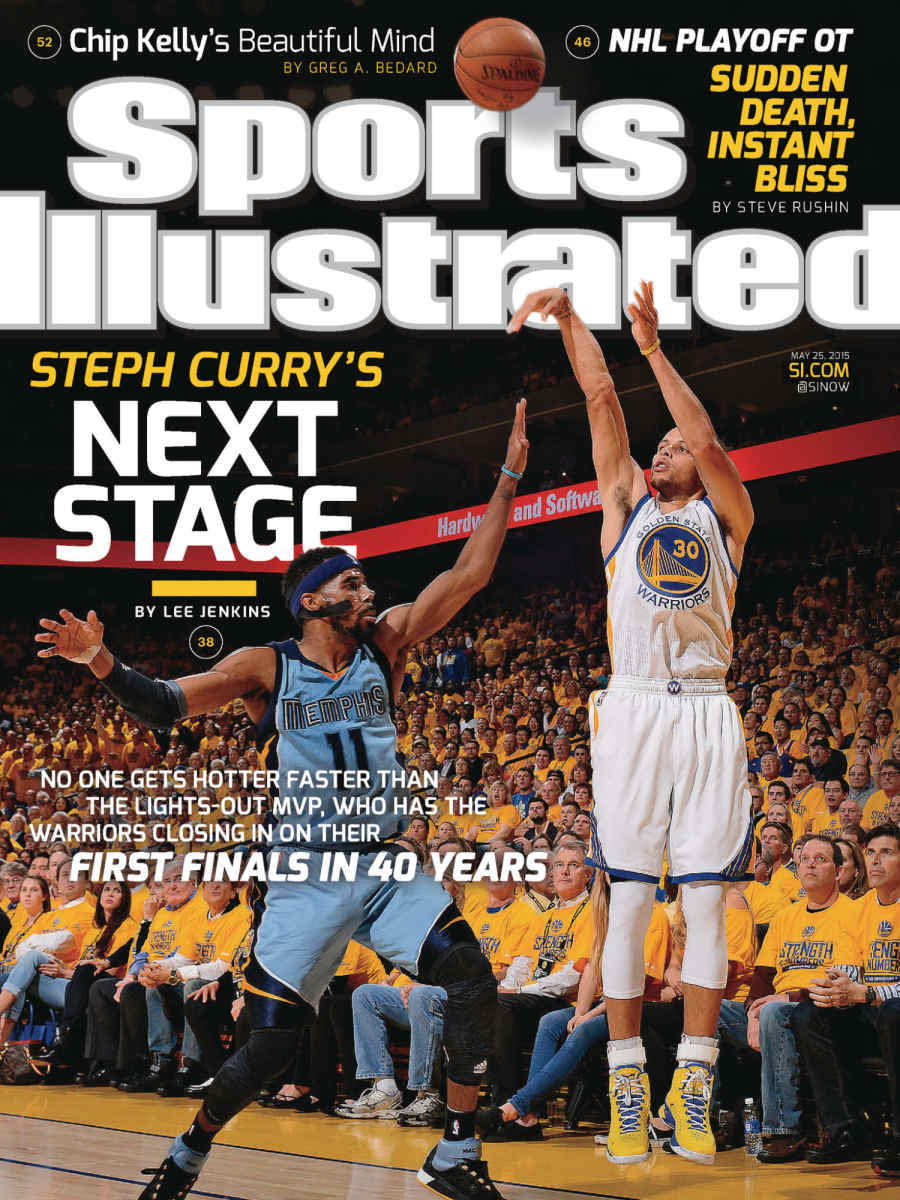SI:AM | One of the Most Heartwarming Walk-Offs You’ll Ever See
Good morning, I’m Dan Gartland. Sometimes there is crying in baseball.
In today’s SI:AM:
❤️ Jose Trevino’s emotional game-winner
🌍 Russia’s uncertain spot in international sports
If you're reading this on SI.com, you can sign up to get this free newsletter in your inbox each weekday at SI.com/newsletters.
A welcome feel-good story
Yesterday was an emotional day for Yankees catcher Jose Trevino. On what would have been his late father’s birthday, Trevino started his day with a cup of coffee from his dad’s favorite mug. Then he went out and had his best night at the plate this year—capped by a walk-off single in the 11th inning.
Trevino’s dad, Joe, died in 2013, while Jose was a student at Oral Roberts University. He made his big league debut with the Rangers five years later and in his third career game got a walk-off hit against the Rockies on Father’s Day, giving a tearful interview after the game.
Last night’s game was just as emotional for Trevino, because it would have been his father’s 69th birthday and because of the school shooting in Uvalde, Texas. Trevino, who said he lives about 90 minutes from Uvalde, began both his on-field interview after the clutch hit and his press conference by offering his condolences.
After he ripped a single down the third base line to win the game, he pointed to the sky and yelled, “Papí!” Not only was it a walk-off hit on his dad’s birthday, it was a situation he and his dad would play out all the time in their backyard in Ben Bolt, Texas.
“I know y’all saw some tears, and there’s a reason behind it,” Trevino told reporters. “My dad was a huge Yankees fan. He would always put me in these scenarios; he always said, ‘Ninth inning, down one, you need a base hit to tie the game or win the game at Yankee Stadium.’”
Everything, right down to the celebration, was just as they had practiced it. Trevino said that his dad would tell him to “open your arms like you’re flying” after the clutch hit.
Joe Trevino was a Yankees fan and had hoped his son would someday put on the pinstripes.
“From a young age, he never forced me to play baseball, but when I wanted to, he was always there,” Trevino said. “It’s just crazy that he would put me in that scenario. This goes back to me being traded over here. He always said, ‘I’m preparing you to be a Yankee,’ like, always, always.”
Trevino, the Yankees’ backup catcher behind Kyle Higashioka, had the game of his life. He hit a solo homer in the third inning, tied the game in the seventh with a single and then had the walk-off hit in the 11th. The guy who scored the winning run was Isiah Kiner-Falefa, the same guy who scored on Trevino’s 2018 Father’s Day walk-off.
“He had just told me about [his father’s birthday] and had watery eyes,” Kiner-Falefa said after the game. “That was a cool moment for me to be able to score the winning run [then], and to be able to score the winning run again in the same situation, on a bigger stage, with the Yankees.
“It was a cool moment for him to really earn those pinstripes. It’s something you can’t explain, and he’s gonna remember it for the rest of his life.”
The best of Sports Illustrated

In today’s Daily Cover, Michael Rosenberg tackles the big question shrouding international sports today: Should Russia be allowed to compete?
“Ignoring the invasion of Ukraine entirely would be both insensitive and foolhardy. But the sports world is also in danger of punishing innocent athletes, boosting Russian support of Putin—and, inadvertently, adopting Putin’s twisted view of what sports should be.”
Rohan Nadkarni was in Dallas for Game 4 of the Western Conference finals, where the Mavericks avoided elimination, but the game took a backseat to Steve Kerr’s and Jason Kidd’s emotional statements about the Texas school shooting. … The latest episode of SI Weekly with John Gonzalez features a report on Herschel Walker’s primary win in Georgia’s senate race and what it says about sports idolatry. … Howard Beck has the story of how “one, two, three… Cancun” became an NBA playoffs punch line. … The family of late Washington State quarterback Tyler Hilinski is as committed as ever to improving mental health resources for college athletes.
Around the sports world
Even though Mike Smith allowed a goal from the other end of the ice, the Oilers beat the Flames to go up 3–1 in that series. … Brittney Griner’s wife urged President Biden to bring her home in an interview with ABC. … The Yankees are dealing with injuries to three key players. … The NFL is reportedly considering changes to the Pro Bowl, including the possibility of scrapping it. … Canelo Álvarez and Gennady Golovkin are set to meet for a third time.
The top five...
… things I saw yesterday:
5. USC offensive line recruit Cooper Lovelace’s stretching routine
4. The Angels’ slick 1-4-3 double play
3. Draymond Green’s free throw attempt landing perfectly on the back of the rim
2. The ridiculous 13–12 game between the Mets and Giants
1. Joc Pederson’s three homers for San Francisco, making him the first Giants player with a three-homer game at home since Barry Bonds in 1994. (Pederson spoke with Bonds before the game and thanked him afterward for giving him some tips.)
SIQ
Willie Mays made his Giants debut on this day in 1951, going 0-for-5 against the Phillies. Mays didn’t pick up the first hit of his National League career until his fourth game, hitting a home run off which Hall of Fame pitcher?
- Robin Roberts
- Dizzy Dean
- Hoyt Wilhelm
- Warren Spahn
Yesterday’s SIQ: Which stadium hosted the first night game in major league history on May 24, 1935?
Answer: Crosley Field in Cincinnati. The Reds beat the Phillies 2–1 in the first big league game under artificial lights.
The first night baseball game was played in 1880, one year after Thomas Edison invented the light bulb, but that game was played between amateur teams. And while other pro teams held exhibition games at night, it wasn’t until 1930 that the first official minor league game was played under the lights, between Independence (Mo.) and Des Moines of the Western League.
According to the Society for American Baseball Research, there were 65 teams in the minors that had installed permanent lights at their parks by the end of the 1934 season, but no MLB teams had taken the plunge. That changed in May ’35, when the Reds played their historic game.
MLB’s first night game was such a big deal that then President Franklin D. Roosevelt sent the signal (via telegram from Washington) to have the lights switched on. The man who flipped the switch was Reds general manager Larry MacPhail, who had been hired by the struggling team two years earlier and is credited with making night baseball a reality in the big leagues.
“Larry MacPhail almost single-handedly sold night baseball to Commissioner [Kenesaw Mountain] Landis,” former Reds announcer Red Barber told the Cincinnati Enquirer in 1985. “Owners were afraid of change and that the lights would not be efficient enough. The final push for league permission came from Landis. He said, ‘Give this team a chance. Cincinnati is down and out and trying to build a bankrupt ball club.’”
The Reds played seven night games in 1935, averaging 15,638 fans per night—a staggering increase over the 4,910 fans they averaged for day games during that 68-win season.
Though the fans showed up in droves and sportswriters were impressed with the aesthetics of night baseball (the Enquirer’s James T. Golden Jr. gushed that the ball looked “like a pearl against dark velvet” in the night sky), some people were skeptical of the innovation, like Washington Senators owner Clark Griffith.
“There is no chance of night baseball ever becoming popular in the bigger cities. People there are educated to see the best there is and will only stand for the best,” Griffith said. “High-class baseball cannot be played at night.”
The Reds were alone in playing night games in 1936 and ’37 (seven games each year) but were joined by the Dodgers in ’38. MacPhail had left the Reds and that was his first year in Brooklyn. Between then and the United States’ entry into World War II in ’41, nine more teams began playing games at night.
From the Vault: May 25, 2015

With the Warriors on the brink of their first NBA Finals appearance since 2019, let’s take a look back at their first title run with this core.
While Stephen Curry took a leap in the 2012–13 season and made his first All-Star team the following year, it wasn’t until Steve Kerr took over as coach in the ‘14–15 season that the Warriors found their groove. They won 67 games in the regular season and, behind Curry’s hot shooting, reached the conference finals for the first time since 1976, at which point Lee Jenkins’s profile of Curry ran on the cover of Sports Illustrated.
Jenkins’s story isn’t about Curry’s torrid start to the playoffs (he had scored at least 30 points in five of Golden State’s 10 postseason games to that point) as much as how he became the game’s most unstoppable long-range shooter and his reputation for stepping up when his team needs him the most:
“It has happened so many times in so many gyms throughout his 27 years that those closest to him can see the Curry Flurry coming, like animals sensing earthquakes. If his warmup is poor, if his team is trailing, if his season is teetering, if a sidekick is hurt or suspended or otherwise indisposed, if he is jostled or provoked or wronged in any way, take cover. Those are a few of his tells. His performance rises with the stakes, and for a franchise that hasn’t reached the conference finals since 1976, the ante has never been higher than it is right now. ‘On the big stage everything slows down,’ Curry says. ‘You’re comfortable. You’re not rushed. You know it’s do or die, but you treat it like it’s game 27. You can do that because you’ve been there before—and failed.’”
Curry’s star turn continued past the second round, of course. He was on fire in the conference finals (31.2 points per game) and, outside of a lousy Game 2, equally impressive against the Cavs in the Finals as the Warriors captured their first championship since 1975.
Though the supporting pieces have changed, the Warriors and their Curry–Klay Thompson–Green core have been a fixture in the NBA for the better part of a decade. Reaching back into the Vault for this story made me realize just how long it’s been since they first burst on the scene and that the end of that era is closer than it may seem. Curry is 34 and while he’s under contract through the 2025–26 season, Green can become a free agent after next season, and Thompson’s deal is up in the summer of ’24. Playoff runs like the one they’re on now could be numbered.
Check out more of SI’s archives and historic images at vault.si.com.
Sports Illustrated may receive compensation for some links to products and services on this website.
